On August 6, seventy years ago, the United States detonated atomic bombs in Hiroshima and Nagasaki that ended WWII. Without those bombs, the war with Japan would have dragged on and on. The Japanese would have fought for as long as they could hold out … for their country, for their family honor, for Bushido. It’s just the way they are.
I know. I’m half Japanese. In fact, my mother’s parents are from an area one hour outside of Hiroshima. Thus, the Hiroshima bombing brings WWII full circle for my mother. She was born in San Francisco and grew up in Japantown. During WWII, her family was forced to relocate to a remote part of Utah where the US tested nuclear weapons underground. Most of her family died of cancer.
A few years ago, we visited the Pearl Harbor memorial with my extended family. I folded origami cranes with my kids, my niece and my mother. My mother had been there years ago on behalf of her brother who was recognized for his bravery as part of the 442nd Regiment. My mother, sister and I also visited our relatives in Hiroshima in 1992 where we also saw the Peace Museum which, though full of people, was as silent as a tomb. The two museums; two ends of a bookcase.
With the money my mother received as reparations from the U.S. government for her forced relocation (and the sole survivor of her family), she bought herself a new car. It was a Japanese luxury car and she drove it for several decades until this year, at 91 years old, when she stopped driving altogether. She is a breast cancer survivor, so she decided to donate her car to a breast cancer charity.
My mother donated her Lexus to CarsforBreastCancer.org after she stopped driving.
While the war took a personal toll on my mother, she’s a very positive person and always looks on the bright side. With her pocketbook, I admire how she was able to make a quiet personal statement and turn something negative into something positive, full of hope and compassion. It’s a circle all over again.
Hiroshima Book List for Kids
The Peace Tree from Hiroshima: Little Bonsai with a Big Story by Sandra Moore, illustrated by Kazumi Wilds
Itaro, Wijiro, Somegoro, and Marusu — four generations of Yamaki men — took care of the special bonsai tree from Miyagima. When the atomic bomb exploded in Hiroshima, it was just two miles away from their home. The Yamaki family decides to gift their precious bonsai tree to the United States in a gesture of hope and peace. It resides today in the National Arboretum in Washington. Masaru’s grandson Akira visited it and thus the circle continues. A tree that inspires peace. [historical fiction picture book, ages 8 and up]
My Hiroshima by Junko Morimoto
This is author and illustrator Junko Morimoto’s first-hand account of experiencing the atomic bombing of Hiroshima. She was born in Hiroshima City, Japan and witnessed first hand the devastation it caused. This book gets graphic, as it should, describing the aftermath of the bomb explosion. [picture book, ages 4 and up]
The Paper Crane by Molly Bang
Throughout Asia, the crane is a symbol of happiness and eternal youth. In Japan, the crane is one of the mystical or holy creatures (others include the dragon and the tortoise) and symbolizes good fortune and longevity because of its fabled life span of a thousand years. from Wikipedia
A kind man who owns a restaurant on a busy street prospers until a new road is built and no one uses the old one. The man becomes very poor and on many days, no one stops by at all. One day, a stranger comes and though he has no money, the kind man makes him a meal fit for a king. In return, the stranger shows him how to fold a crane from a paper napkin. This crane is special; when the kind man claps his hand, the bird comes to life and dances. New of this wondrous bird spreads and people flock to his restaurant again. In time, the stranger comes back. This time the stranger plays the flute that makes the bird dance like never before. When he finishes, he climbs on the back of the crane and they both fly away, never to be seen again. [picture book, ages 4 and up]
Hiroshima by Laurence Yep
Based on real accounts by Hiroshima survivors, the fictional story of twelve-year-old Sachi follows her witness to the devastation in her city as a result of the bombing and describes her healing process as she helps to rebuild her home. [middle grade, ages 8 and up]
Soul Lanterns by Shaw Kuzki
Twelve-year-old Nozomi lives in Hiroshima many decades after it was attacked with a nuclear bomb. Every year, she participates in a paper lantern-floating ceremony to honor the deceased. Her mother always releases a white lantern with no name, and as she begins to dig into the lost stories of what happened on August 6, 1945, she finds that a project she is working on is helping to heal her community. This story speaks to the urgent need for peace in our world. [middle grade, ages 10 and up]
Sadako and the Thousand Paper Cranes by Eleanor Coerr
Don’t you remember that old story about the crane?” Chiziko asks. “If a sick person folds one thousand paper cranes, the gods will grant her wish and make her healthy again.” She handed the crane to Sadako. “Here’s your first one.”
Sadako is based on a real little girl who lived in Japan from 1943 to 1955. She was in Hiroshima when the bomb was dropped. Ten years later she died from leukemia, a result of the radiation from the atomic bomb. Her courage inspired countless children in Japan and around the world. This is her story.
When she began to work with the paper, Sadako discovered that folding a crane wasn’t as easy as it looked.
Out of colored paper, cranes
come flying into
our house.
O flock of heavenly cranes
Cover my child with your wings.
Sadako Sasaki died on October 25, 1955. She had folded five hundred and forty-one cranes. Her classmates folded three hundred and fifty-six cranes so that one thousand were buried with Sadako. A Folded Crane Club was organized in her honor. Members still place thousands of paper cranes beneath Sadako’s statue on August 6, Peace Day. On the statue is a wish:
This is our cry,
this is our prayer;
peace in the world.
[chapter book, ages 8 and up]
One Thousand Paper Cranes: The Story of Sadako and the Children’s Peace Statue by Ishii Takayuki
A nonfiction companion book to Sadako and the Thousand Paper Cranes, this tells the story of how Sadako’s peace statue came to be. Sadako had actually folded more than 1,500 paper cranes before dying at age 12. She was in 7th grade. Her classmates rallied and created a movement so broad in trying to raise money for a marker for Sakado that, in the end, they had raised an astounding $450,000! Her memorial statue stands today in Hiroshima at the Peace Memorial Park.
Image from Activity Village
Close up of Sadako’s Children’s Peace Statue. Image from Shiki Book.
A Thousand Cranes: Origami Projects for Peace and Happiness by
Now that you can fold origami cranes (I have a video below), here are some ideas for what to do with them. This book includes forty-eight tear-out sheets of colorful chiyogami to get you started. [nonfiction craft book, ages 10 and up]
The Complete Story of Sadako Sasaki by Sue Mantle Dicicco and Masahiro Sasaki
Review from Ms. Yingling Reads:
“This is an excellent overview of what happened in Hiroshima, from the viewpoint of the effects of the bombing on one family. While I was familiar with Sadako’s story, I appreciated that this really was a more complete version, encompassing the family’s life before, during, and just after the bombing, as well as a depiction of Sadako’s life before she became ill. This made the story even more effective and poignant. The aftermath of her death, especially with the input of her brother, was very moving as well. Combined with this fresh, updated cover, I can see this being very popular in elementary or middle schools, where it is never to early to gently inform students about the grim effects of war.” [middle grade, ages 9 and up]
On the Horizon by Lois Lowry
Review from Children’s Books Heal:
“Lois Lowry personalizes WWII’s most infamous events — Pearl Harbor and Hiroshima — for young readers who may not be familiar with this period of our history. It brings history alive through the moving and heartbreaking stories of ordinary individuals, who are unaware of what will happen at 8:15 a.m. Some survived. Others didn’t.
The story is told in free verse which beautifully fits the tone of each vignette. It is told in two parts. Lowry carefully crafts each and every word so that readers feel that they have been part of something powerfully intimate. She does so with simplicity and sincerity.
Kenard Pak’s black and white illustrations are haunting and will evoke a response from readers. This book belongs in every school library.” [middle grade, ages 10 and up]
Sachiko: A Nagasaki Bomb Survivor’s Story by Caren Stelson
Review by Ms. Yingling Reads:
“Sachiko Yasui was six years old when the US dropped the atomic bomb on Nagasaki. Miraculously, she survived with minimal immediate wounds, as did her parents, three siblings, and an uncle. While they struggled with housing, food, and general survival for quite some time, the real problem was the after effects of the radiation. Her brothers and uncle succumbed quickly, and caner eventually took her sister and father as well. At the time of publication, however, Sachiko was still alive. She chose not to speak about her experiences until after the death of her mother in 1992.
This book tells her story in an informative and yet gripping way. The historical background of the war is explained in understandable ways and adds depth to the narrative. Period photos, ads, and other documents are all helpful in explaining the larger picture, and the bibliography will help students find other books on the topic.
This would be an excellent companion book to Kathleen Burkinshaw’s The Last Cherry Blossom, and is best read after that book since it picks up near the end of that fictional title. At 112 pages, it is a perfect length, and I’m excited to have this title to offer to students who either are interested in this time period OR are being “forces” to read nonfiction for class. Both types of students will be pleased with this.” [middle grade, ages 10 and up]
In a Flash by Donna Jo Napoli
Review by Ms. Yingling Reads:
“In 1940, young Italian sisters Simona and Carolina move to Japan with their father, who takes a job as a cook at the Italian embassy. Going to a local school is not the easier thing Simona has ever done, since the children are not all that friendly, but she does manage to make a few good friends, and her Japanese language skills grow quickly. For a while, things are okay at the embassy, but as the world hurtles headlong towards WWII, things become increasingly difficult. The Japanese bomb Pearl Harbor, and even though Italy is part of the Axis powers, there is increased prejudice against foreigners. When the US invades Sicily in 1943, Simona’s father is worried about the US taking over Italy, and what that might mean for their relatives there. When the Japanese emperor declares that Italy is the enemy, things quickly become dire at the embassy. Eventually, all of the occupants are rounded up, told to bring one suitcase, and sent off to internment camps. The ambassador’s wife wants to bring two suitcases, so Simona’s is left behind. Eventually, the girls are separated from not only most of their possession but also their father. Survival in the camps is very difficult, especially since food is scarce in Japan. Eventually, the girls escape and make their way across the countryside, where they are helped by a variety of kind citizens who realize that they are just children and need care. When towns are being firebombed, the latest person to care for them, a professor, feels that the girls are endangering him, and offer to drop them off in Omihachiman, which is supposed to be unimportant, but is also where their friend Aiko lives. The girls eventually end up in Hiroshima under the care of a Catholic church, but the radiation sickness is spreading, the town is in ruins, and they can only hope that the US soldiers can help them get back to Italy.” [middle grade, ages 9 and up]
The Last Cherry Blossom by Kathleen Burkinshaw
Review by Children’s Books Heal:
Kathleen Burkinshaw’s debut novel is powerfully penned, authentic, emotionally raw and deeply personal. It is a captivating journey about life, love, secrets, pain, loss and hope that will tug at your heart long after you put the novel down.
Even though there are frequent air raid drills and black-out curtains, traditional Japanese life continues with a strong sense of community. The first half of the story focuses on family, cultural traditions, food preparation, ceremony, ritual, and the beautiful cherry blossom and New Year’s festivals. There are family secrets, the angst of adolescence and enduring friendships. Readers will easily fall in step with the pace of life in Japan before it begins to change.
The story is character-driven, with Yuriko narrating. Reader’s will be captivated by Yuriko’s curiosity, spirit, and strong will, which is nurtured by her papa, who publishes the newspaper. Their bond is tight and he tells her bedtime stories of their samurai ancestors and how they are the last branches of their family tree. Yuriko shares secrets and a love of jazz music with her best friend Machiko.
The plot picks up momentum as more soldiers are being sent to war and not returning home. Rumors spread that there isn’t enough scrap metal to build Japanese planes. The Emperor sends out propaganda that the Japanese are beating the Allies in the Pacific. But, the Americans bomb Nagasaki. Air raid sirens are going off many times daily. And in a blink of an eye, there are warplanes flying low overhead. Sirens sound. There is an eruption of bright light and loud sounds. Yuriko’s world implodes that tragic day.
This is a dark period in humanity’s history 71 years ago. Children will learn that Japanese children shared the same fears as the children in Allied countries during World War II. Her novel speaks to the enduring will to survive. It is my hope that Burkinshaw’s novel will help readers humanize historical events that have radically changed our world and take them more seriously as they become our future leaders. The author’s mother shared her story because she felt “the use of nuclear weapons against any country or people, for any reason, is unacceptable.” [middle grade, ages 11 and up]
Origami Paper
I searched for beautiful, but inexpensive origami paper. Click on the image to view more closely. My son can teach you how to make an Origami Shiruken Throwing Star if you need more origami projects. That’s what my leftover origami paper will be used for!
 100 sheets, 10 designs, 6 inch square, $5.00
100 sheets, 10 designs, 6 inch square, $5.00
 100 sheets, 6 inch square, $5.39
100 sheets, 6 inch square, $5.39
 180 sheets, 24 colors, 5 7/8 inches square, $3.00
180 sheets, 24 colors, 5 7/8 inches square, $3.00
Origami Book Giveaways
I am giving away these two origami books (2 winners!). To enter, please fill out the Rafflecopter below.
Origami Activities for Children by Chiyo Araki
The Great Origami Book by Zülal Aytüre-Scheele
How to Fold an Origami Crane
To examine any book more closely at Amazon, please click on image of book. 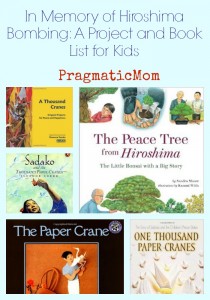
As an Amazon Associate, I earn from qualifying purchases.
p.s. Here are images from Japan’s 70th Anniversary of the Hiroshima and Nagasaki bombings from CNN.
p.p.s. Related posts:
Japanese Internment Books for Kids & My Family’s Story
Japanese American Post Internment Story: Journey Home (ages 8-12)
Bilingual Japanese Books for Kids
Japan: Books for Kids on Shogun, Family Crests, Block Prints
Best #OwnVoices Japanese American Books for Kids & Teens
Meet Asian Pacific American Hero Niki Nakayama
List of Books that inspired graphic novel NORI
Follow PragmaticMom’s board Multicultural Books for Kids on Pinterest.
Follow PragmaticMom’s board Children’s Book Activities on Pinterest.
BEST #OWNVOICES CHILDREN’S BOOKS: My Favorite Diversity Books for Kids Ages 1-12 is a book that I created to highlight books written by authors who share the same marginalized identity as the characters in their books.

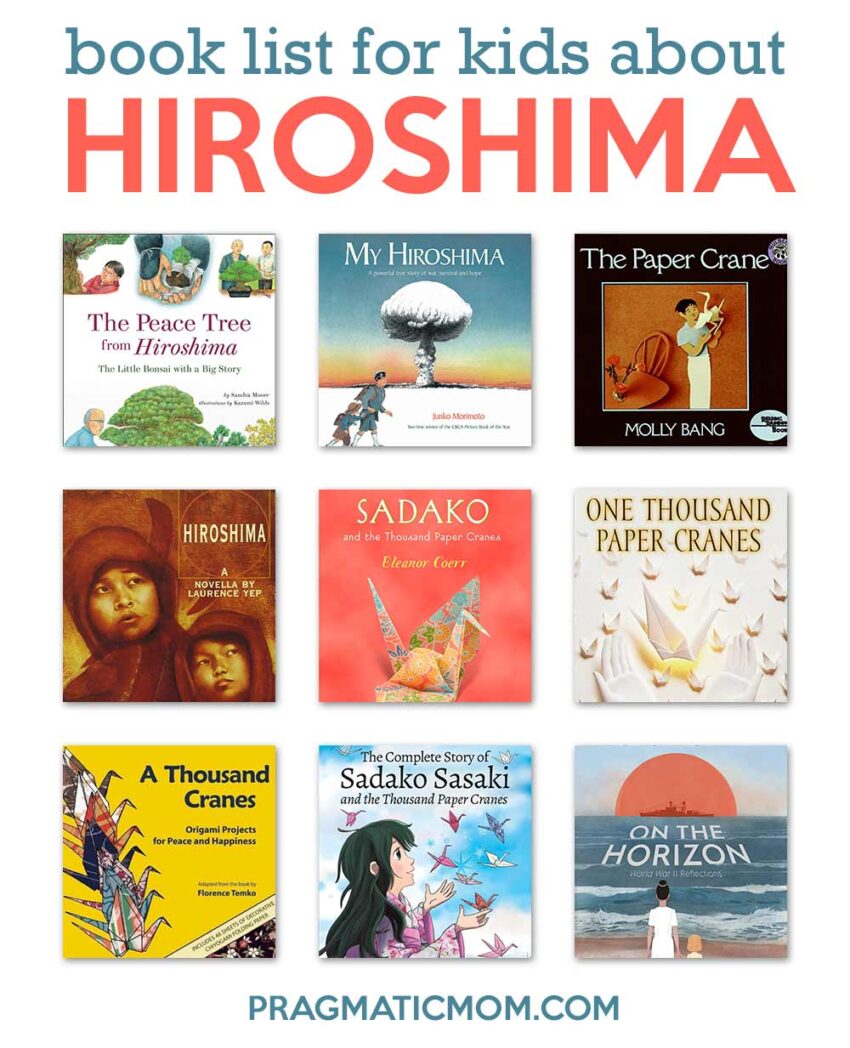
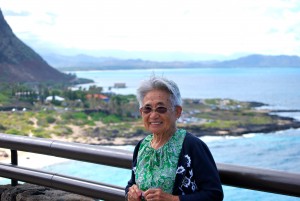
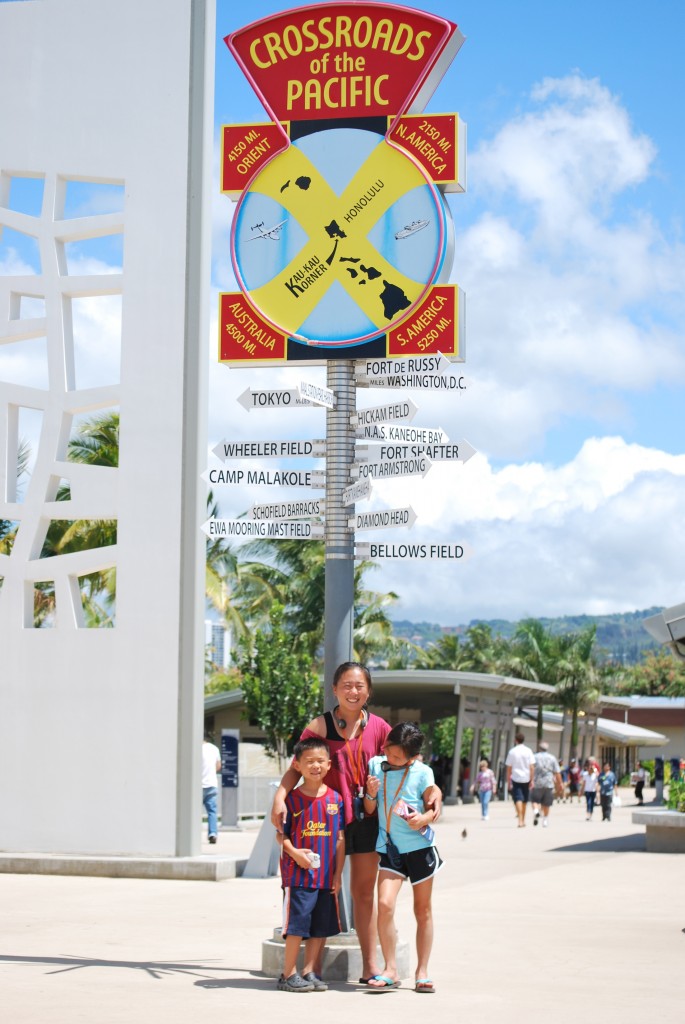
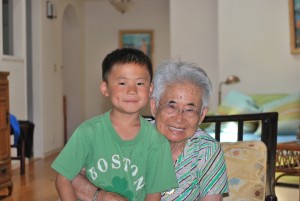
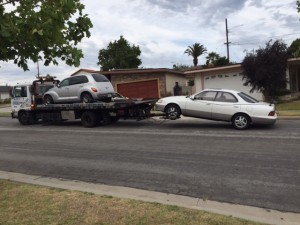
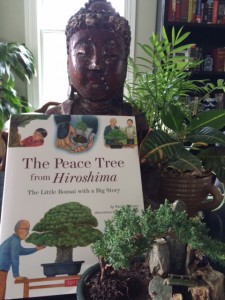
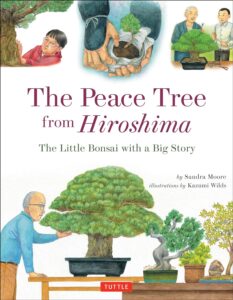
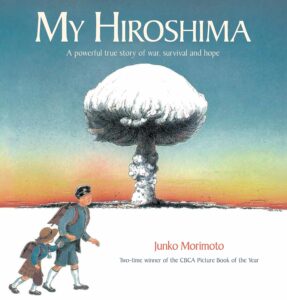
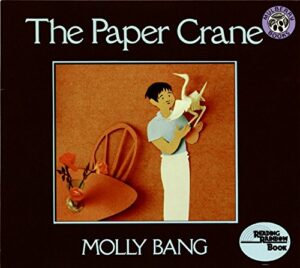
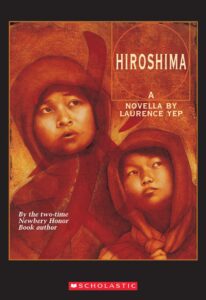
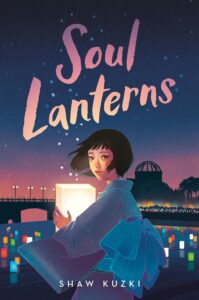
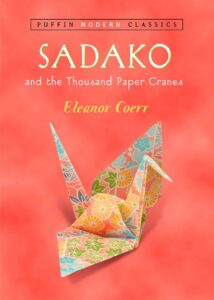
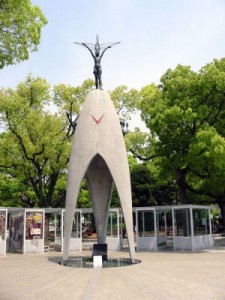
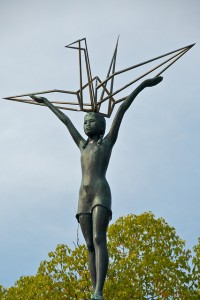
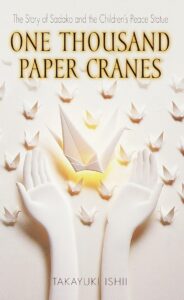
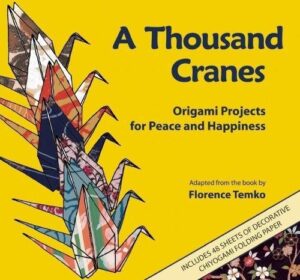
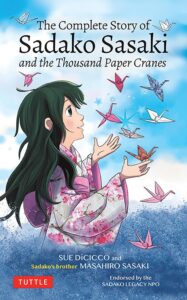
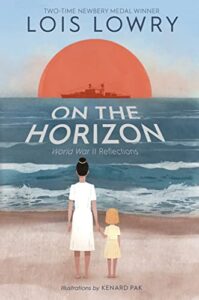
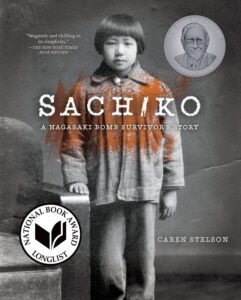
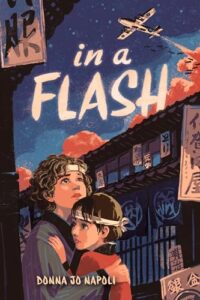
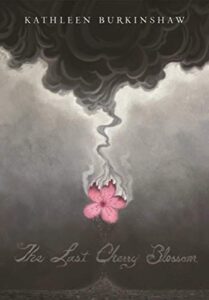
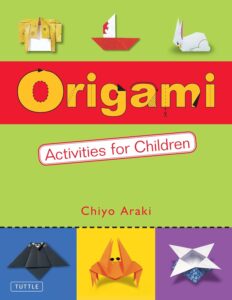
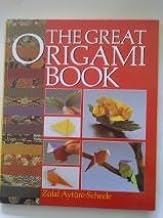
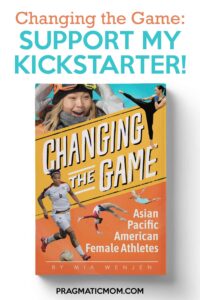
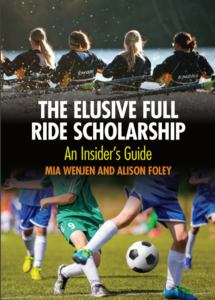
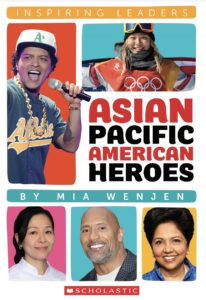
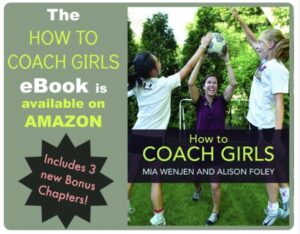

I always wondered how you present such an horrific event like Hiroshima to little kids. Can they comprehend it? Is it good to let them know at such tender age about terrible events like this?
I guess I’ll pick one of the books your mention here to see how they dealt with it.
On a positive note I love your picture with your two kids under Crossroad for the Pacific.
Hi Giora,
I think ages 10 and up are best for this heavy topic! Maybe even older depending on how sensitive they are.
I can make the crane. But I have made other things following directions.
Hi Leslie,
I have trouble with the directions for origami. My son and I find that videos work a little better but origami is HARD!
Beautiful books with a beautiful message. Thank you for sharing this!
Thanks so much Holly!
Your mother is very inspiring!
I am actually blogging about origami tomorrow. A Japanese-American friend came to visit and got my kids very excited about origami! We folded foxes, cranes, flowers, and ducks with my friend G.
Hi MaryAnne,
I think the origami books are hard to follow; we have better luck watching videos but once you get it, it seems so easy! I’m glad you had someone there to demonstrate!
I’m a Sophomore in high school and we just currently went into more depth with this part of history. I am doing a project on this, and I decided to make a picture book for it. I was wondering in there are any good books on this list that you might recommend for me to look more into for references?
My daughter did her Sophomore thesis on Japanese Internment. Are you interested in Hiroshima bombing specifically? Sadako’s Crane would be a good one in terms of children’s books. Email me if you have more questions: pragmaticmomblog@gmail.com. There were some middle grade books for kids about the attack on Pearl Harbor that looked good too.
I love Sylvia and Aki.